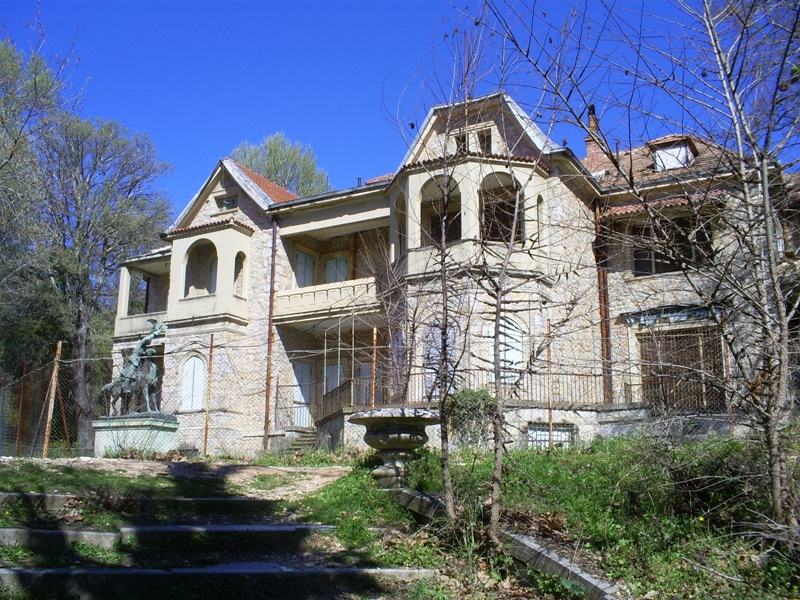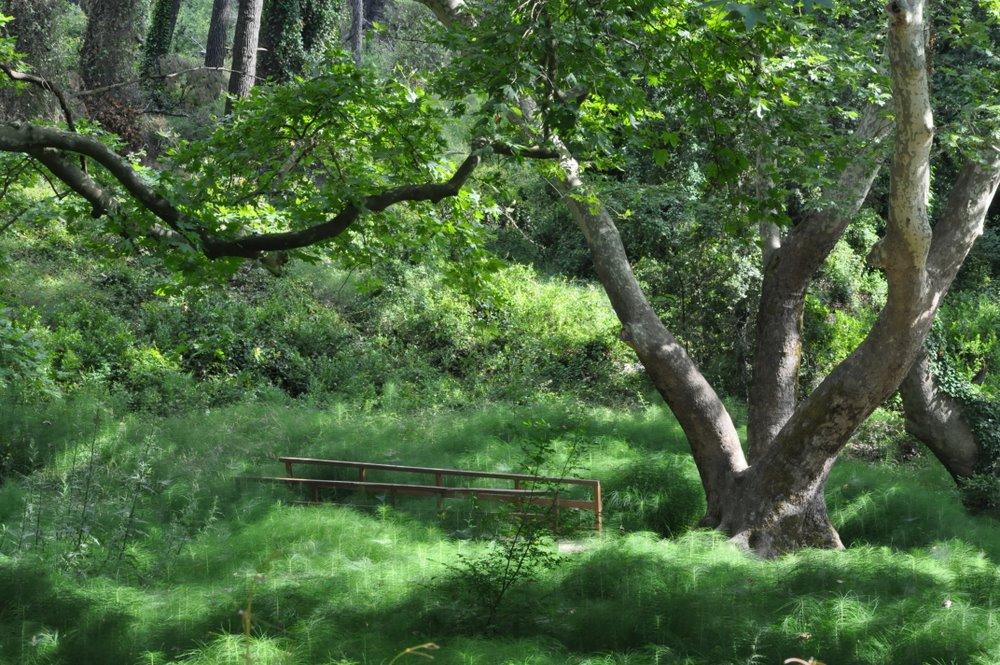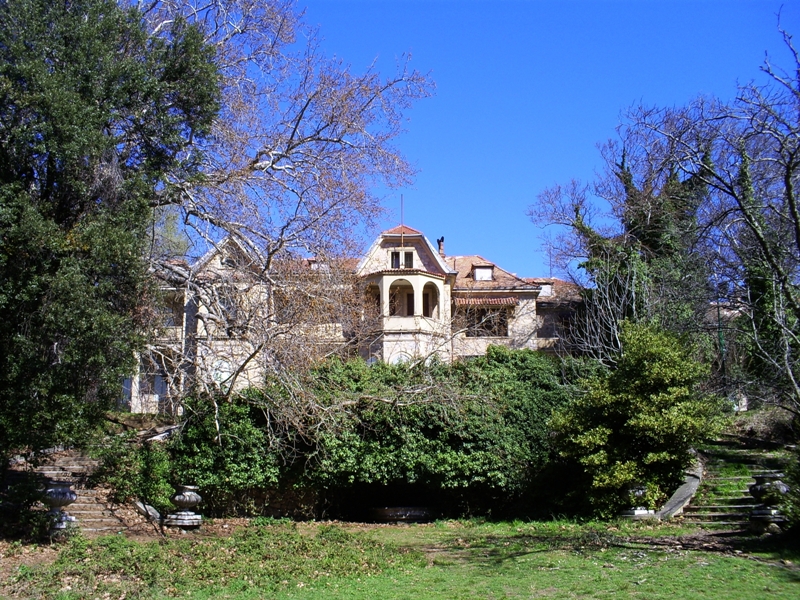
The grounds of Greece’s former royal palace, the Tatoi, will undergo a massive transformation soon. Greece is hoping to convert the stunning estate, which has been left abandoned for the past 50 years, into a hub of culture, history, and luxury.
In addition to shops, restaurants, and nature trails, a luxury hotel and spa will be constructed on the property.
The main building of the palace will become a museum honoring the royal family’s history with displays featuring the family’s possessions found on the site, including the family’s famed car collection.
The palace, which sits on grounds spanning 10,000 acres, was purchased for the Greek royal family’s summer residence in the 1880s.
Located on a slope of Mount Parnitha, Tatoi lies 27 kilometers (16 miles) from downtown Athens, in an verdant area featuring woods, rivers and abundant wildlife.
Through reviving the site into a luxury vacation spot and highlighting its royal history with a new museum, Greece hopes to attract more tourists — especially those who are history lovers — to the country.
Additionally, the Tatoi, located so near Greece’s capital city, could make for the perfect weekend retreat for Athenians looking to enjoy the site’s breathtaking natural landscape and intriguing history.
The restoration plan
The renovation project, headed by Greece’ Minister of Culture, Lina Mendoni, includes restoring the palace to its former glory and converting one of the 55 buildings on the land into a five-star hotel and spa.
In a statement, Mendoni outlined Greece’s goal in renovating the palace, which she described as creating “a year-round attraction with environmentally friendly infrastructure” on the historic site.
Additionally, the plan includes the construction of world class cafes, restaurants, and shops on the palace’s grounds, on which currently 55 buildings once used by the royal family and its staff are located.
The palace’s vast holdings are also home to gardens, a royal cemetery, and fertile agricultural lands.
As part of Greece’s vision for the estate, the gardens and agricultural acreage will be brought back to life after years of deterioration and neglect, and used to cultivate beautiful flowers and a variety of crops.
Various beauty products, wines, and oils produced on the palace’s grounds will be for sale, and visitors will even get the chance to watch the fascinating process of making the artisanal goods.
Since the palace is located in such a stunning, bucolic landscape, Greece has also proposed the creation of paths through Tatoi’s grounds for nature lovers, along with athletic fields and campsites.
The restoration of the site on such a massive scale will require a colossal investment totaling around 130 million euros (dollars). Greece hopes that the ambitious and potentially lucrative nature of the project will attract private funds to supplement renovation costs.
While the project’s construction and renovation work will require a huge amount of labor, Mendoni notes that securing enough funds to keep the project afloat once it is operational, along with “sustaining its massive running costs” will prove to be the most challenging aspects.

The history of Tatoi, Greece’s former royal palace
The Tatoi was first bought by the Greek royal family in the 1880s. Since then, it has faced numerous changes of ownership and use, following the extremely turbulent political life of the country during the late 19th and the 20th century.
Originally designed as a summer retreat for the family, it later became the permanent residence of the Greek royals, who found it much more private than the official Royal Palace (now the Presidential Palace) in downtown Athens.
At least twenty royals are interred in its royal cemetery, starting with Princess Olga of Greece and Denmark, who died in 1880, including Lady Katherine Brandram, the Princess of Greece and Denmark, who passed away in 2007.
A total of five former kings are also buried on the grounds of the Tatoi Palace, including George I of Greece, Alexander of Greece, Constantine I of Greece, George II of Greece and Paul of Greece, the father of the last Greek king, Constantine II.
The estate’s history is unfortunately one of almost unending turmoil. The stunning palace was partially burned during a fire in World War I, large swaths of land were stolen — and later regained — in the 1920s, and the grounds tragically served as a makeshift graveyard during the brutal years of World War II.
After the royal family’s attempt to bring down the Junta in 1967 failed, they were forced out of Greece and their lands were then seized by the state.

Ownership disputes
Former Prime Minister Konstantinos Mitsotakis, the father of today’s PM Kyriakos Mitsotakis, introduced a law in 1992 which granted all of the estate’s main buildings back to the former royal family of Greece.
This caused widespread reaction throughout the country, and just two years later the next Prime Minister, Andreas Papandreou, brought the entirety of the estate back into public ownership.
A long-running judicial dispute then began between the former royal family and the Greek state.
The European Court of Human Rights decided in 2003 that the ownership of the estate could in fact not be granted to the former Greek royal family.
However, the court agreed that the family deserved compensation totaling €12 million from the Greek state — an amount estimated to represent only a fraction of the total value of the land.
Hoping to embarrass the former royals, then-PM Costas Simitis decided to pay the monumental compensation using money from the Greek Natural Disasters Fund.
In doing so, he attempted to convince the public that the former royal family was taking public funds reserved for vulnerable Greeks for their family’s palatial complex.
Responding to this move, the former royal family decided to create the ”Anna Maria Foundation,” after the name of the former Queen who is the wife of King Constantine II.
The Anna Maria Foundation is focused on providing help to groups of people or areas which have been hit by natural disasters in Greece.
Push for restoration of the former royal palace
In 2012, Greece, facing mounting economic struggles, considered selling the property for much-needed funds. The public rallied against the move, however, pushing for the site’s conversion into a museum or public space.
Understandably, this turbulent history of disputes, neglect and political infighting and intrigues has left the estate to fall into neglect for many years.
Most of the buildings on the estate have endured severe damage, due to both weather conditions and vandalism.
In 2019, Prime Minister Kyriakos Mitsotakis expressed his commitment to revive the estate, restoring it to its former glory, and cultivating a beautiful space for both Greeks and tourists alike to enjoy Tatoi’s history and stunning landscape.
See all the latest news from Greece and the world at Greekreporter.com. Contact our newsroom to report an update or send your story, photos and videos. Follow GR on Google News and subscribe here to our daily email!



